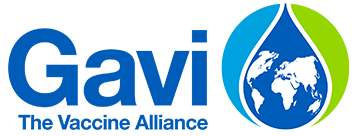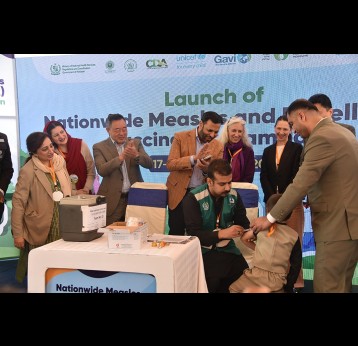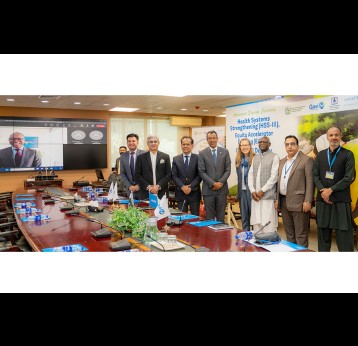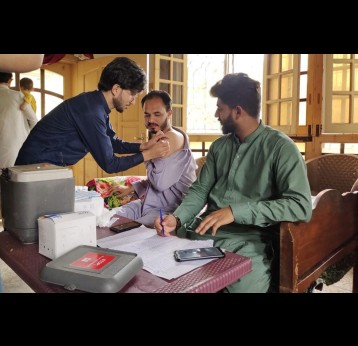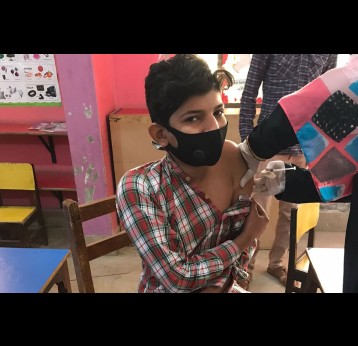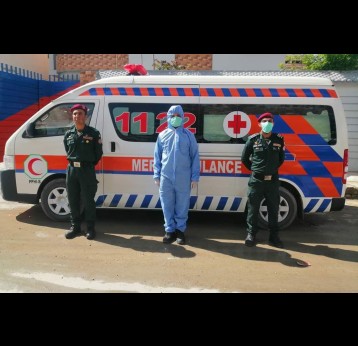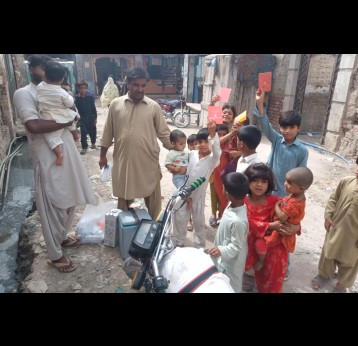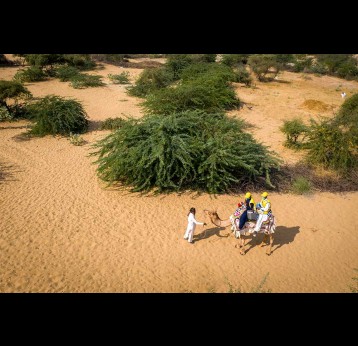Essential website updates between 07:00-07:15am CEST 19 December 2025 may cause disruption.
Country Information
Key immunisation indicators
Data sourcesApprovals are a subset of commitments for which funding availability and programme performance has been assessed as satisfactory. Only such approved amounts can be disbursed subject to all other conditions for disbursement being met by the countries. Approvals are typically granted for the current year and one further year.
Commitments represent endorsements of multi-year programme budgets made by the Gavi Board, Executive Committee or the CEO. These endorsements do not constitute a liability to pay but instead send a positive signal that Gavi intends to fund a programme over its entire life span subject to performance and availability of funds.
Disbursements by 'Programme Year' in the graph shows the payments made from 2020 up to the date of the report. The payments are shown by the programme year to which they relate irrespective of the calendar year in which they were made. The programme year is the year in which the relevant vaccine/cash programme is being implemented.
Annual figures may reflect negative values due to refunds from previous years or allocation of prepayments to reflect actual apportionment by country.
Disclaimer: the boundaries and names shown and the designations used on this map do not imply the expression of any opinion whatsoever on the part of Gavi, the Vaccine Alliance concerning the legal status of any country, territory, city or area or of its authorities, or concerning the delimitation of its frontiers or boundaries. Dotted lines on maps represent approximate border lines for which there may not yet be full agreement.
This Gavi country data is made available under the Creative Commons BY 4.0 license: https://creativecommons.org/licenses/by/4.0/
Latest News
All News
Pakistan launches nationwide measles-rubella vaccination campaign to protect 34 million children
The Government of Pakistan’s FDI – in partnership with Gavi, UNICEF, and the WHO – launched a national measles and rubella (MR) vaccination campaign in Islamabad today to protect 34.6 million children.
Pakistan introduces HPV vaccine to protect girls from cervical cancer, joining 150 countries
The Government of Pakistan’s Federal Directorate for Immunization in partnership with Gavi, the Vaccine Alliance, UNICEF and the WHO, today launched the HPV vaccination campaign to protect adolescent girls from cervical cancer in later stages of…
Ensuring that children, adolescents, and women, especially the most vulnerable, have access to quality and sustainable health services in Pakistan.
Pakistan has vaccinated more than 80% of the adult population against COVID-19
In about 13 months, Pakistan has turned the vaccination tide, fuelled by the availability of adequate COVID-19 vaccine doses.
Vaccine education: Rolling out COVID-19 vaccines to Pakistan’s schools
In Pakistan, educational institutions are convincing parents to get their children vaccinated against COVID-19 through motivational sessions and informative material.
Amid uncertainty, Pakistan is winning the battle against Omicron
Pakistan's government is working on a robust strategy to contain the spread of COVID-19 by rapidly scaling up immunisation in rural parts of the country.
Pakistan reignites polio vaccination drive
Civil society, media, local influencers, celebrities, religious scholars, and frontline workers are all reinforcing the Pakistan government’s fight against Poliomyelitis.
COVID-19 means that Pakistani transgender people are even more marginalised
Trans rights organisations such as the Good Thinker Organisation are working to ensure that Pakistan’s transgender community recovers from the hardship that COVID-19 has wrought.
Last month, Pakistan undertook one of its biggest-ever vaccination campaigns: 90 million doses of measles and rubella vaccine administered to 90 million children in just two weeks. #VaccinesWork was there.
Data sources
| Name | Source | Date |
|---|---|---|
| Total population, 2024 | United Nations, World Population Prospects (UN WPP), July 2024 release | 2024-07-11 |
| Birth cohort (live births), 2024 | United Nations, World Population Prospects (UN WPP), July 2024 release | 2024-07-11 |
| Surviving infants (infants surviving to 1 year), 2024 | United Nations, World Population Prospects (UN WPP), July 2024 release | 2024-07-11 |
| Infant mortality rate (deaths <1 year per 1,000 births), 2023 | UN Inter-agency Group for Child Mortality Estimation (UN IGME), March 2025 release | 2025-03-25 |
| Under-five mortality rate (deaths <5 years per 1,000 births), 2023 | UN Inter-agency Group for Child Mortality Estimation (UN IGME), March 2025 release | 2025-03-25 |
| Gross national income (GNI) per capita, Atlas method (current US$), 2024 | World Bank national accounts data, and OECD National Accounts data files, July 2025 release | 2025-07-01 |
| Zero-dose children, 2024 | WHO/UNICEF Estimates of National Immunization Coverage (WUENIC), July 2025 release; figures calculated using number of surviving infants from UN World Population Prospects (UN WPP) | 2025-07-15 |
| % reduction in number of zero-dose children, 2019–2024 | WHO/UNICEF Estimates of National Immunization Coverage (WUENIC), July 2025 release; figures calculated using number of surviving infants from UN World Population Prospects (UN WPP) | 2025-07-15 |
| DTP1/DTP3/MCV1 coverage (%), 2024 | WHO/UNICEF Estimates of National Immunization Coverage (WUENIC), July 2025 release | 2025-07-15 |
| Drop-out from DTP1 to DTP3, 2024 | WHO/UNICEF Estimates of National Immunization Coverage (WUENIC), July 2024 release | 2025-07-15 |
| Drop-out from DTP1 to last routine dose of MCV, 2024 | WHO/UNICEF Estimates of National Immunization Coverage (WUENIC), July 2025 release | 2025-07-15 |
| Geographic equity of DTP3 coverage in 20% of districts with lowest coverage, 2024 | WHO/UNICEF Joint Reporting Form (JRF), July 2025 release | 2025-07-03 |
